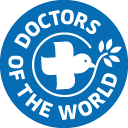In the Philippines, teenage pregnancy has become a growing public health crisis—one that now threatens not only the well-being of young girls but the future of national development itself. The Commission on Population and Development warns that without urgent and comprehensive intervention, this crisis could undermine economic growth and deepen existing social inequalities.
What’s particularly alarming is the sharp rise in pregnancies among younger adolescents. Live births among girls aged 10 to 14 increased from 2,411 in 2019 to 3,343 in 2023—a 6.6% jump in just four years. In 2023 alone, 17 young women under the age of 20 had already given birth five or more times, and 38 girls under 15 experienced repeated pregnancies.
These numbers are not just statistics—they reflect lives altered too early, futures compromised, and rights denied.
The Roots of the Crisis
Teen pregnancy in the Philippines is fueled by a complex mix of poverty, gender inequality, legal barriers, and lack of access to information and health services.
- Gaps in Comprehensive Sexuality Education (CSE):
Although CSE has been included in the national K-12 curriculum since 2018, its implementation remains inconsistent—especially in rural and faith-based schools, where the risk of teen pregnancy are already elevated. CSE must be widely applied and taboos around sex, gender and sexuality must be discussed openly and without shame or judgement. - Poverty and Inequality
Teen pregnancy is most prevalent among out-of-school youth and girls from low-income families, who often lack access to education, healthcare, and accurate information about their rights. In these vulnerable communities, early motherhood becomes both a cause and a consequence of poverty. - Legal and Structural Barriers
Laws requiring parental consent for access to contraception prevent many young people—especially those in abusive or neglectful households—from obtaining the care and information they need. Meanwhile, abortion remains completely prohibited, leaving girls with no legal options in cases of unwanted pregnancies. - Sexual Violence and Exploitation
Sexual coercion, often by older men, is another driving force behind teen pregnancies. Despite the age of consent being 16, many girls report being pressured or manipulated into sexual activity, highlighting how power imbalances and gender-based violence continue to put girls at risk. - Lack of Youth-Friendly Resources
Safe spaces where adolescents can access modern contraceptives, testing kits, or even non-judgmental advice remain scarce. Without these essential services, young people are left vulnerable to a cycle of early pregnancy, stigma, and poor health outcomes.
Our Commitment: Bringing Sexual and Reproductive Health to the Frontlines
For years, Doctors of the World (Médecins du Monde) has been working to improve access to sexual and reproductive health and rights (SRHR) for youth across the Philippines. Building on this commitment, we have launched a new program in one of the most underserved regions of the country.
On the southern island of Mindanao, in the Bangsamoro Autonomous Region, a fragile peace has emerged after decades of armed conflict. But health indicators remain the lowest in the country, and SRHR remains a deeply taboo topic in many communities.
In January, we began a new initiative in South Upi, in partnership with Community Organizers Multiversity, aimed at empowering communities to break the silence around SRHR and gender-based violence. This program focuses on:
-
Awareness-raising workshops in schools and communities
-
Capacity building for health professionals
-
Distribution of contraceptives, pregnancy tests, and screening kits
Through this work, we hope to ensure that no young girl is left without support, knowledge, or choice.
A Call to Action
Teenage pregnancy is not just a health issue—it is a human rights issue. Every girl deserves the chance to grow up, to make informed decisions, and to shape her own future. The time for action is now.
Let us work together—governments, communities, educators, and humanitarian organizations—to break the cycle of early pregnancy and ensure that every young person in the Philippines can access the information, care, and dignity they deserve.


